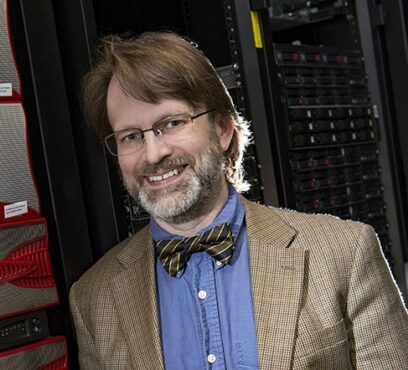Jeremy Kepner


Tuesday October 1st, 2024
4:00pm Eastern
Marlar Lounge 37-252/37-272 and via Zoom
"Jeremy Kepner is an MIT Lincoln Laboratory Fellow, and founder of the Lincoln Laboratory Supercomputing Center and SuperCloud, which together constitute the largest supercomputing facility in New England. He is also a founder of the MIT-Air Force AI Accelerator. He received a PhD in Astrophysics Sciences from Princeton University in 1997, where he worked on early numerical simulations of dwarf galaxy formation and its quasar absorption signatures."
- Rob Simcoe
Astrophysical methods applied to the internet: celestial sphere, observatories, telescopes, detectors, background radiation, large scale structure, and pulsars
Global usage of the Internet is expected to exceed 5 billion people. Accordingly, the Internet is a domain as worthy of scientific exploration as land, sea, air, and space. Deepening our scientific understanding of the Internet is expected to yield correspondingly equivalent societal benefits. Observationally, the Internet can be viewed as billions (heading towards trillions) of variable brightness sources with many natural analogues in astronomy and astrophysics. This talk explores these analogues which include network traffic matrices (‘celestial sphere’), dedicated network traffic collection sites (‘observatories’), specialized network taps (‘telescopes’), finely calibrated high-speed traffic analyzers (‘detectors’), spectral characterization of aggregated traffic (‘background radiation’), aggregate cross-correlation analysis (‘large scale structure’), and identification of regular broad-spectrum emitters (‘pulsars’). Understanding of the underlying processes in any field is discovered by painstaking science. Early efforts on small network data sets revealed significant new discoveries and established the field of Network Science. Current observations are a million times larger and are calling out for scientific exploration. More pragmatically, effective utilization of the Internet requires a detailed understanding of its principal characteristic: network traffic.